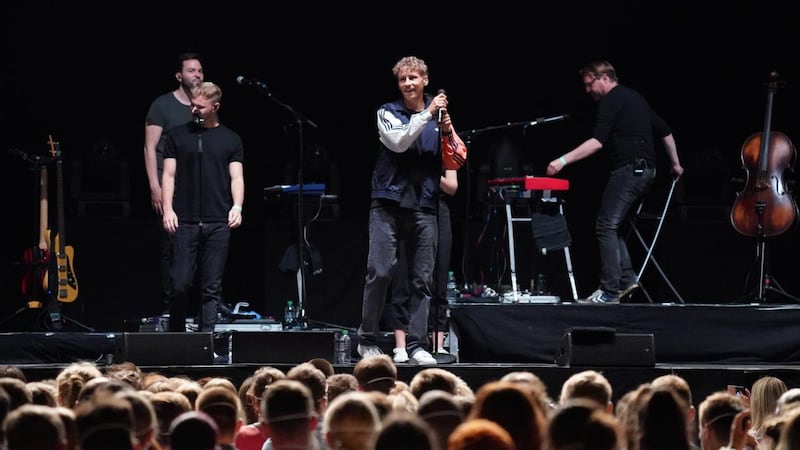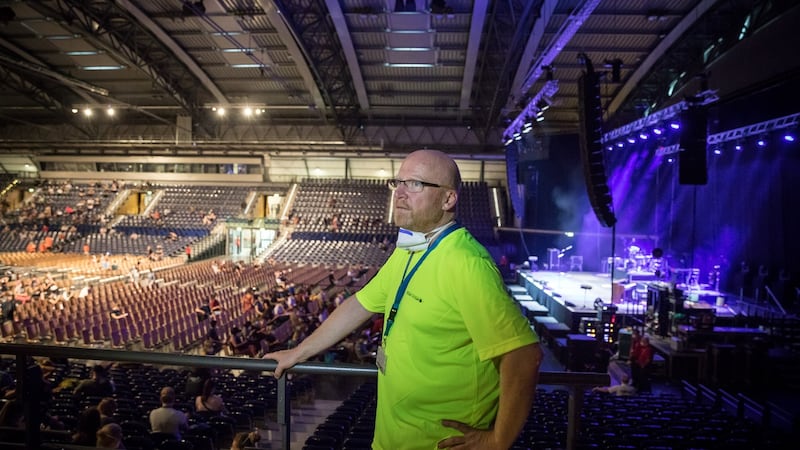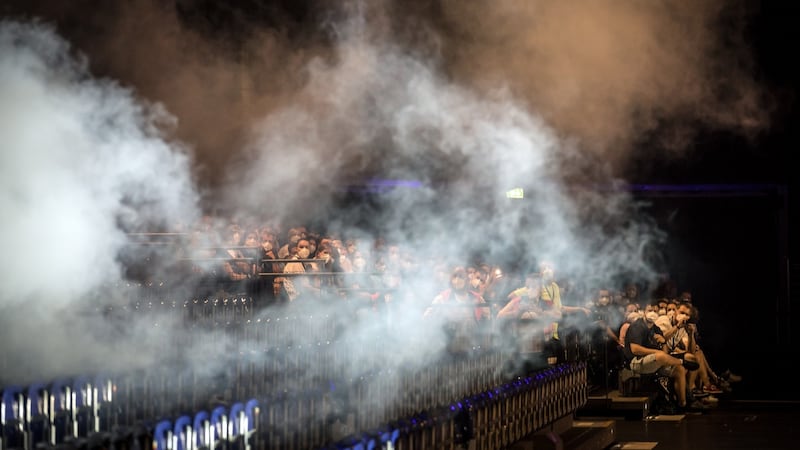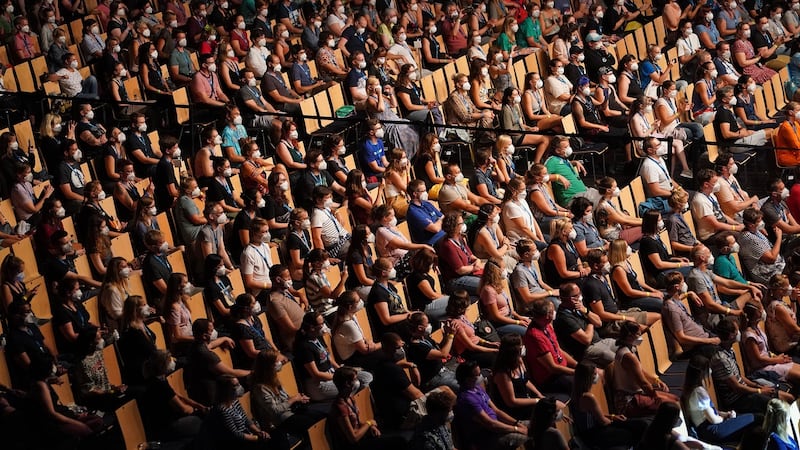German pop singer Tim Bendzko was trying his best to energise the crowd at Quarterback Immobilien Arena on Saturday morning. Flanked by band members and backup singers, he bounced across a stage at the indoor concert and sports venue, thrusting his microphone toward about 1,400 tightly packed audience members, prompting them to sing along.
The response was a muffled hum – not surprising, given that the audience members were wearing masks and sitting in sweltering heat. Still, Bendzko thanked them and said: "On this day, you are saviours of the world." They were not typical concertgoers but volunteers in an elaborate study by a team at Martin Luther University Halle-Wittenberg called Restart 19. Each attendee, outfitted with a digital location tracker and hand disinfectant laced with fluorescent dye, was carefully positioned in seats as part of an experiment to track the risks of coronavirus infection posed by large, indoor events.

Researchers hope to use their results to determine which elements of events like this pose the greatest risk for transmission and to help create guidelines for limiting such dangers and safely restarting live performances around the world. The live-music and events sector has been among the hardest hit by the coronavirus pandemic. In Germany alone, it brings in €130 billion in revenue each year, according to a recent study commissioned by the IGVW, an industry group there. Concert venues were among the first to shut down to slow the virus' spread, and their future remains uncertain.
Indoor performances have returned in Germany, but slowly, under rules that vary from state to state. Many venue operators and event organisers, however, argue that crowd size limits and hygiene requirements imposed by authorities make it economically unviable for venues that aren’t subsidised by the state to restart operations. In the US, health experts have said that arena concerts would likely not happen on a wide scale until a vaccine becomes available.
Leipzig is in the state of Saxony, where indoor events are allowed with up to 1,000 attendees – amid strict hygiene and distancing rules. But Philipp Franke, a manager of the arena hosting the study, said in a phone interview that this number was still too low for him to reopen. The attendance limit is scheduled to be raised in September, but Germany's rising infection numbers have drawn increased scrutiny to the plan.
Franke hoped that the study’s results would allow politicians to make informed decisions about resuming concerts and indoor sports. “Cultural events are socially important,” he added. “A society needs such events in order to find some fulfilment and an outlet.”

The study is being led by Dr Stefan Moritz, head of the clinical infectious diseases department at the university. In a phone interview, he said the experiment was a response to the dearth of scientific literature available about the dangers of events like the one Saturday.
“We know the personal contacts at the concert are risky, but we don’t know where they happen,” he said. “Is it at the entrance? Is it at the bleachers?” Dr Moritz concluded that the best way to gather reliable data would be to stage an actual concert. The arena in Leipzig agreed to help manage the logistics and recruited Bendzko. In an interview backstage on Saturday, he said he took part in the study because “it is better to do something active to move things along than to sit at home and wallow in insecurity”.
He had played some small concerts in recent months at drive-in theatres, he said, but they were not economically viable. “Applause doesn’t pay our rent,” he added. To minimise the risk of infection, all volunteers were tested for coronavirus in advance and had their temperatures checked upon arrival. Outfitted with their tracking devices, masks and fluorescent disinfectant, they were then asked to simulate different concert scenarios over the course of 10 hours: one with no social distancing, another with moderate safety measures, and a third with strict ones.
Each iteration included performances by Bendzko and a break, during which participants simulated trips to vendors for food and drinks and made bathroom visits. Using trackers, the staff monitored the number of times attendees came close to one another, and later used ultraviolet lamps to determine which surfaces were covered with the most fluorescent disinfectant by the end of the day.

Dr Moritz said the most intriguing finding likely would be related to aerosol spread. Scientists have recently confirmed that the virus can remain suspended in the air, possibly for hours in closed environments. “It’s so weird what happens with these movements of air,” he said. “Things you wouldn’t expect.” To simulate the spread of aerosols in the arena Saturday, staffers used a smoke machine to emit a cloud of fog into the rafters. It drifted upward before moving into a spiral shape and spreading toward the audience. The spread of particles in the space was modelled by Dr Moritz’s team members, who will compare it with data collected by carbon dioxide sensors during the study.
Dr Moritz said results from the study, which was sponsored by the states of Saxony and Saxony-Anhalt, were expected be ready in early October. He added that the findings likely could be applied to similar events and venues around the world. He said he had been contacted by researchers in Australia, Belgium and Denmark who planned to carry out similar studies.

For many people in the audience, volunteering was worth it for the experience of finally going to a concert after months of deprivation. Bianca Tenten, a 21-year-old student from Cologne, Germany, said listening to music at home couldn't replicate the sense of togetherness and the spontaneous encounters that she often experienced at live music events. She added that for concert organisers and artists, "there is a passion and a love there".
Stefanie Oehme, a 34-year-old teacher who travelled to Leipzig from Dresden, said she had grown dispirited with people who contend that limitations on public life are here to stay. "I think this is a sign of things moving back toward the old normal," she said. "It makes it a bit more tangible." – New York Times

















